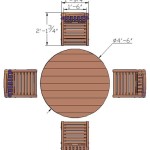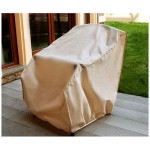How To Install Rubber Patio Pavers On Dirt
Rubber patio pavers offer a durable, comfortable, and aesthetically pleasing alternative to traditional concrete or stone pavers. They are also an excellent choice for homeowners seeking a low-maintenance solution for their outdoor spaces. Installing rubber pavers on dirt requires a few key steps to ensure proper drainage and stability. This article outlines the process of installing rubber patio pavers on dirt.
1. Preparing the Site
The foundation for your rubber patio pavers begins with proper site preparation. This involves leveling the ground, removing debris, and creating a solid base.
Start by clearing the area where you plan to install the pavers. Remove any existing vegetation, rocks, or debris. Next, use a rake to level the dirt surface. Aim for a smooth and even grade, ensuring proper drainage by creating a slight slope away from your home.
2. Installing a Moisture Barrier
A moisture barrier is crucial for protecting your rubber pavers from moisture damage and potential mold growth. A layer of landscape fabric placed beneath the pavers will allow for efficient drainage while preventing moisture from seeping in.
After leveling the ground, spread a layer of landscape fabric over the entire patio area. Ensure the fabric is taut and free of wrinkles or folds. Overlap the edges by at least 6 inches to create a continuous barrier. Secure the fabric using landscaping staples or pins.
3. Laying the Rubber Pavers
Laying the rubber pavers is a straightforward process that involves aligning and securing them in place. Use a measuring tape to determine the desired layout and spacing between pavers.
Start by laying down the first row of pavers along a straight edge, such as a building wall or a string line. Ensure the pavers are level and flush with each other. Continue laying down each row, ensuring they are aligned with the previous row. Leave a small gap between each paver for drainage.
4. Securing the Pavers
While rubber pavers are relatively lightweight, securing them in place can enhance their stability and prevent them from shifting over time. Use landscaping staples or pins to secure the pavers to the landscape fabric.
Insert the staples or pins through the holes in the pavers at an angle. Place the staples or pins around the perimeter of the patio and at strategic locations throughout the surface. Ensure the staples or pins are buried deep enough to secure the pavers without compromising the fabric's integrity.
5. Adding Finishing Touches
After securing the pavers, consider adding decorative elements to personalize your patio space. You can use decorative edging stones or pavers to create a defined border around the patio. This creates a polished aesthetic and prevents the rubber pavers from shifting or spreading.
Additionally, you can use plants, outdoor lighting, or other decorative features to enhance the overall look and feel of your patio. Remember to choose elements that complement the style of your home and create a welcoming and comfortable outdoor space.

Can Rubber Pavers Be Used On Grass Or Dirt Material Warehouse

Rubberific Pavers Brown 16 In By Material Warehouse

Outdoor Flooring Over Grass Or Dirt Interlocking Tiles

Rubberific Pavers Brown 16in X16in 9 Pack Material Warehouse

Rubber Patio Pavers Is It A Good Idea Js Brick

How To Lay Patio Pavers On Dirt Jim The Handyman

How Much Are Outdoor Pavers Rubber Home Patio Or Deck Tiles

Rubberific Pavers 100 Recycled Rubber

How To Lay Rubber Pavers The Home Depot

What Is The Best Method For Installing Pavers Over Dirt Install Guide








